Sheffield Chamber Music Festival 2024 review - curator Steven Isserlis spotlights masterly Fauré and Saint-Saëns | reviews, news & interviews
Sheffield Chamber Music Festival 2024 review - curator Steven Isserlis spotlights masterly Fauré and Saint-Saëns
Sheffield Chamber Music Festival 2024 review - curator Steven Isserlis spotlights masterly Fauré and Saint-Saëns
More delights in the round as Ensemble 360 is joined by very special guests
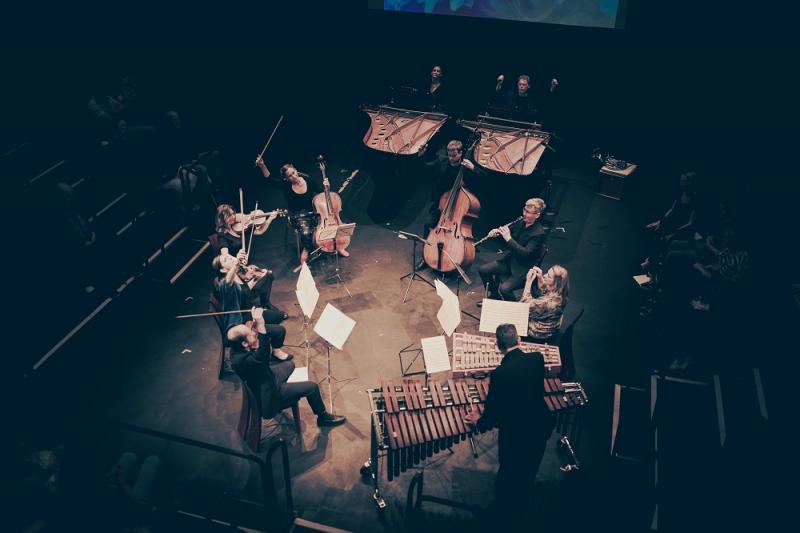
“Saint-Saëns: The Renaissance Man” proclaimed the big screen at the first remarkable programme I attended within the 2024 Sheffield Chamber Music Festival. The same epithet could be applied to this year’s curator, Steven Isserlis, so remarkable a cellist that one forgets until coming face to face with his other talents what a unique speaker and programmer he is.
Sheffield's resident live wires in Ensemble 360 anticipated the generosity by granting his requests, among other things, for the showing of a silent film, probably the first (1908) to have a live score by a major composer (Saint-Saëns), and for a choir to take part in La vision de la reine, a rare work by Augusta Holmès, muse of Franck and Renoir. The open-heartedness paid off, as it did last year with pianist Kathryn Stott. The 2023 experience was enough to get me addicted both to this remarkable, multi-faceted city and one of the most vibrant chamber music festivals anywhere. I only wish I could have been there for all of it: I missed, among other things, a sunrise wind-quintet concert in the General Cemetery, the Holmès in a very unusual programme and – following my departure – Roderick Williams in Ravel's Chansons madécasses and Fauré's La bonne chanson. 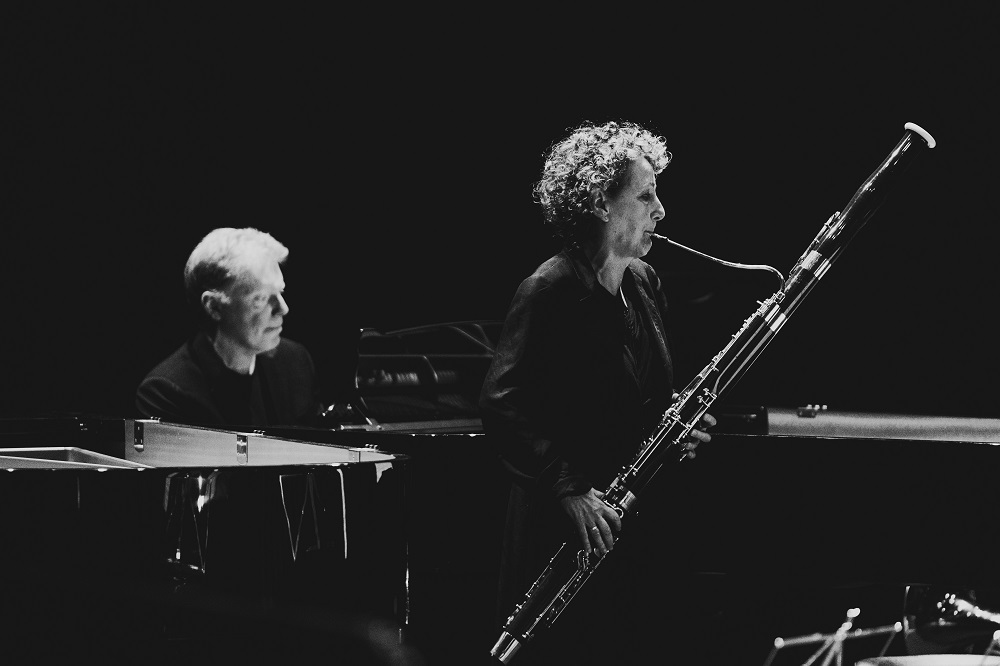 Fauré was the main subject in this, his centenary year, and I was to hear, and re-live, some of his chamber masterpieces during my time in Sheffield. But it seemed appropriate that while last year's dazzling opening concert ended with a performance of Saint-Saëns's perfect, chameleonic Septet for trumpet, strings and piano, 2024 should see some serious catching-up with that most prolific of Frenchmen; if there was any revelatory feting of his achievements in the 100th anniversary year of his death, 2021, I missed it. Yet here we were on Tuesday evening with a dizzying celebration.
Fauré was the main subject in this, his centenary year, and I was to hear, and re-live, some of his chamber masterpieces during my time in Sheffield. But it seemed appropriate that while last year's dazzling opening concert ended with a performance of Saint-Saëns's perfect, chameleonic Septet for trumpet, strings and piano, 2024 should see some serious catching-up with that most prolific of Frenchmen; if there was any revelatory feting of his achievements in the 100th anniversary year of his death, 2021, I missed it. Yet here we were on Tuesday evening with a dizzying celebration.
The opening work, the Morceau de concert for horn and piano, was chiefly a way of spotlighting Ensemble 360's wonderful horn-player, Naomi Atherton, in tandem with its infinitely adaptable pianist Tim Horton – and how typical of this collegial festival that in her pre-performance speech, Atherton hymned the next instrumentalist, Ursula Leveaux, for having inspired her in showing how much you could stand out within an orchestra during their time in the Scottish Chamber Orchestra. But Leveaux's work, the Bassoon Sonata, triggered a voyage of discovery, an epiphany of Saint-Saëns's compressed, light-of-touch but somehow deeply serious late style (Leveaux pictured above with Tim Horton). Back home, I've been catching up on other chamber works, and haven't found a dud or a dull one yet..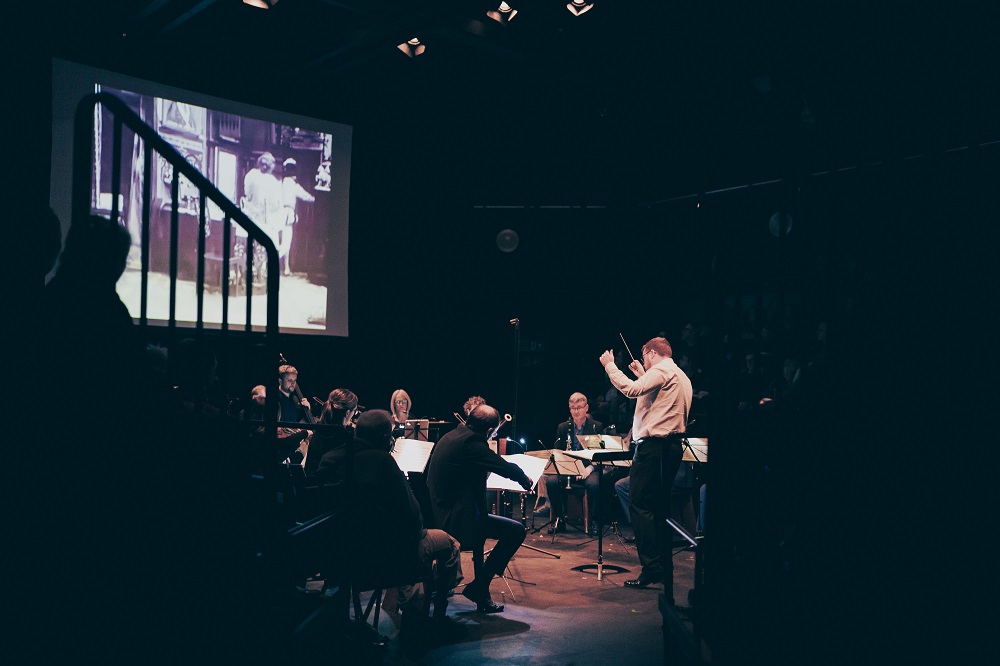 Like Nielsen's stupendously original clarinet and flute concertos, the Indian summer sonatas were to honour a quintet of wind. Saint-Saëns got a little further before his death at the age of 86, adding to the Bassoon Sonata companions for oboe and clarinet. All three first movements convey the ineffable, as old man Fauré does quite differently; the compact structures then do unexpected things. As Leveaux pointed out, every voice of which the bassoon is capable – and which so few works truly honour – is there, while as Adrian Wilson showed us the following night, the radiance of the sonata for his instrument extends into an ad lib dialogue with piano. Horton shared equal honours in both works.
Like Nielsen's stupendously original clarinet and flute concertos, the Indian summer sonatas were to honour a quintet of wind. Saint-Saëns got a little further before his death at the age of 86, adding to the Bassoon Sonata companions for oboe and clarinet. All three first movements convey the ineffable, as old man Fauré does quite differently; the compact structures then do unexpected things. As Leveaux pointed out, every voice of which the bassoon is capable – and which so few works truly honour – is there, while as Adrian Wilson showed us the following night, the radiance of the sonata for his instrument extends into an ad lib dialogue with piano. Horton shared equal honours in both works.
The woodwind get surprisingly beautiful and original phrases in the score for The Assassination of the Duc de Guise, a 20-minute film directed by Charles le Bardy and André Calmettes chiefly remarkable for its display of 16th century gentlemen's hosiery. The fourth seating zone of the octagonal Crucible Playhouse had been replaced by a big screen; conductor George Morton managed perfect synchronisation from his 12 players (pictured above).
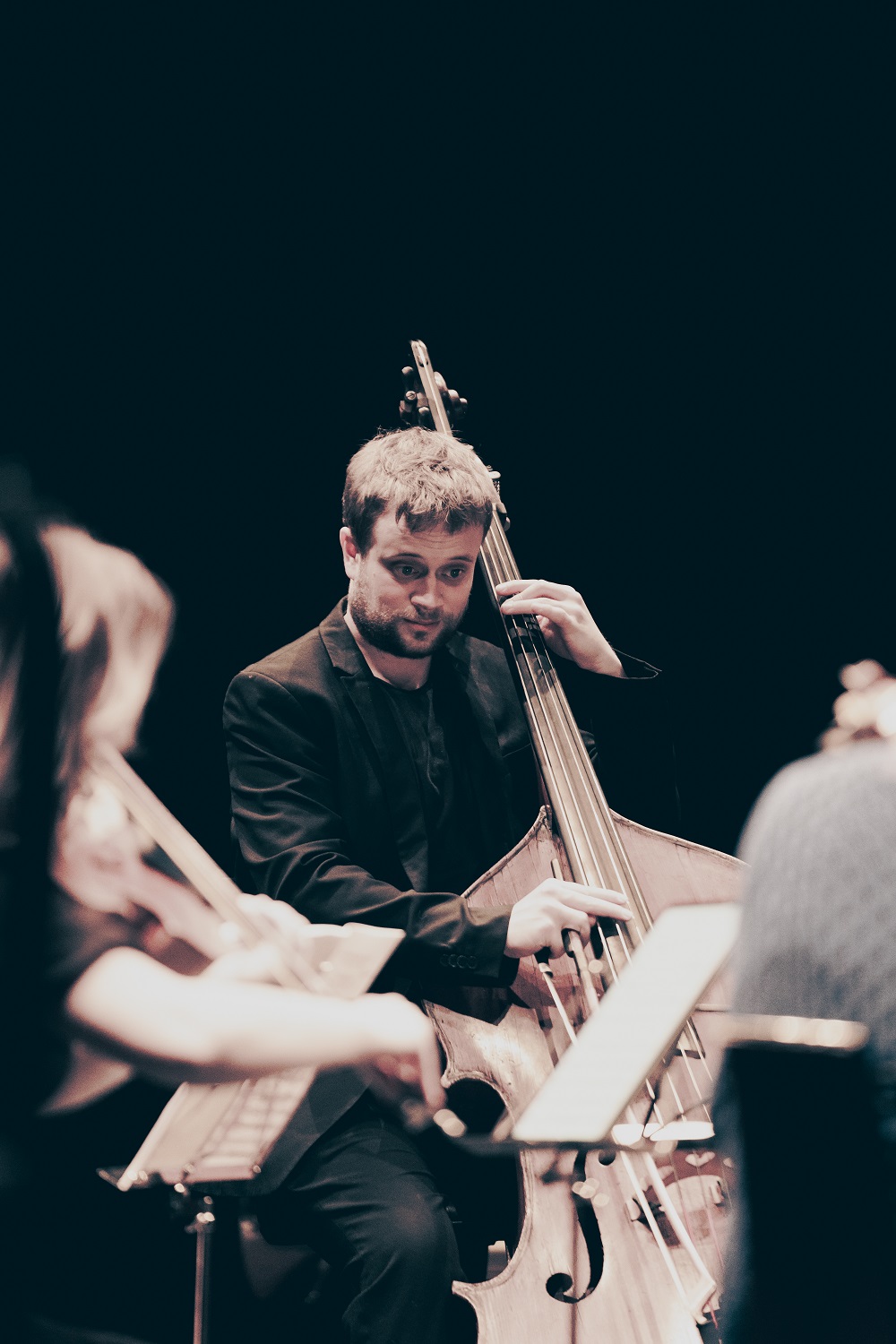 In an evening where the floor space was more or less fully occupied by the musicians, we also had Les odeurs de Paris, a jolly, silly "Grande Marche", the UK premiere of which in 2004 included Isserlis, where the tune wasn't so much the point as the special effects freeing up the players from their usual roles (I found Atherton's nightingale whistle rather addictive and want one). Mercifully the pistol shot anticipated at the end was a quiet one.
In an evening where the floor space was more or less fully occupied by the musicians, we also had Les odeurs de Paris, a jolly, silly "Grande Marche", the UK premiere of which in 2004 included Isserlis, where the tune wasn't so much the point as the special effects freeing up the players from their usual roles (I found Atherton's nightingale whistle rather addictive and want one). Mercifully the pistol shot anticipated at the end was a quiet one.
The abundant japes in The Carnival of the Animals – still a chamber work in its original version – certainly worked; I've never chuckled more at the Elephant playing a Berlioz sylph and Mendelssohn's Puck than in the hands of double-bassist Philip Nelson (pictured above), and Isserlis, who'd come hotfoot from Frankfurt to hear three concerts before his own participation, set the applause off for that one. But what mesmerised here were the almost supernatural beauties, starting with of all things the Offenbach can-canning Tortoises – kept at an oddly energised pianissimo from the unison strings along with pianists Horton and (a surprise to see her name on the leaflet) Ivana Gavrić.
The keyboard mysteries were magically done, too, even pulling focus from clarinettist Robert Plane's cuckoo in the wood – well, maybe not his upside-down joke before vanishing – until of course we got to the disastrous piano exercises of No. 11. Gemma Rosefield's Swan (pictured below) brought tears to the eyes by its very restraint: no mawkishness here, only the exquisite handling of the score's 11 o'clock number. That the performance as a whole could be so moving begs the question of why the composer wanted the work suppressed in his lifetime. Its variety is the very essence of Saint-Saëns. 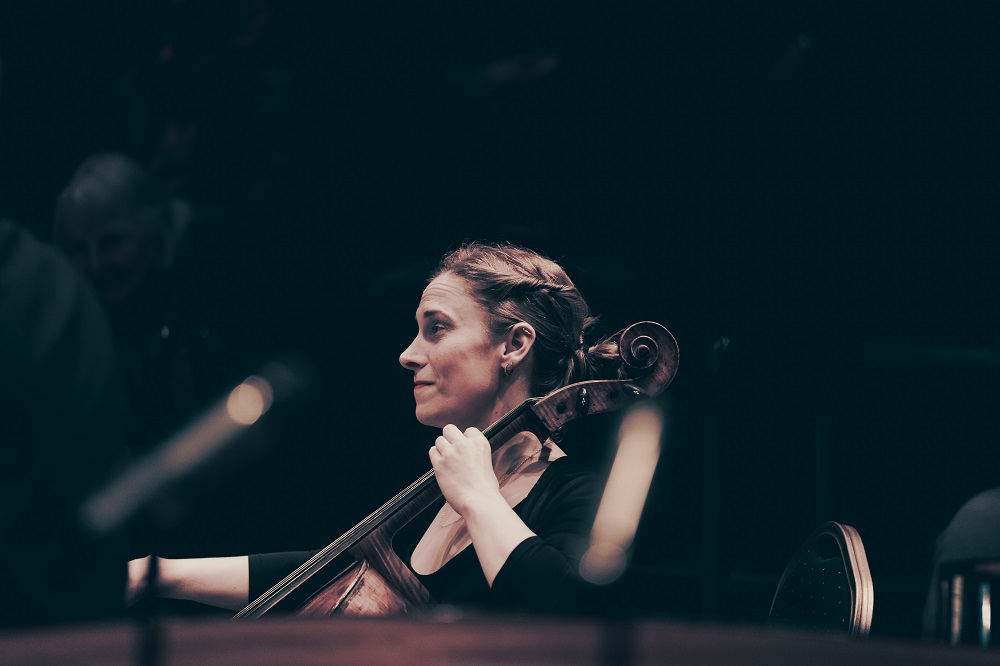 I'd have given much to hear Plane in the third of the late sonatas, but he had extended limelight of a different sort, holding the golden thread through the slow-fast labyrinth of Adès's Alchymia. This four-movement Clarinet Quintet was composed for Mark Simpson, and descends hypnotically to the extended lower register of the basset instrument (Plane gave us a preliminary demonstration). "A Sea Change (...those are pearls...)" and "Lachrymae", with its very subterranean reference to Dowland, are elegies that exploit dark timbres, with "The Woods So Wild" as a fascinating moto perpetuo contrast in between; but it's less clear how the finale, "Divisions on a Lute-song: Wedekind's Round", connects with the rest other than in the title. As in the model, the introduction to the final scene of Berg's Lulu, Adès submits the barrel-organ London tune to distorting-mirror variations. Perhaps the overall theme is death, but as so often with this composer you always want the beginnings of profundity to go deeper. An evocative, fine-tuned performance, all the same.
I'd have given much to hear Plane in the third of the late sonatas, but he had extended limelight of a different sort, holding the golden thread through the slow-fast labyrinth of Adès's Alchymia. This four-movement Clarinet Quintet was composed for Mark Simpson, and descends hypnotically to the extended lower register of the basset instrument (Plane gave us a preliminary demonstration). "A Sea Change (...those are pearls...)" and "Lachrymae", with its very subterranean reference to Dowland, are elegies that exploit dark timbres, with "The Woods So Wild" as a fascinating moto perpetuo contrast in between; but it's less clear how the finale, "Divisions on a Lute-song: Wedekind's Round", connects with the rest other than in the title. As in the model, the introduction to the final scene of Berg's Lulu, Adès submits the barrel-organ London tune to distorting-mirror variations. Perhaps the overall theme is death, but as so often with this composer you always want the beginnings of profundity to go deeper. An evocative, fine-tuned performance, all the same.
In an epic programme, the miniature mastery of Ravel's simply perfect Berceuse sur le nom de Fauré and Messager's graceful, unpredictable Solo de concours for clarinet and piano held focus. But Franck's winged beast of a Piano Quintet was the thing: a vehicle for the highest feats of virtuosity, exhausting simply to listen to, from Horton, and tireless strength from the strings (violinists Benjamin Nabarro, Claudia Ajmone Marsan, viola player Rachel Roberts and cellist Rosefield). It stood us in good stead for Fauré's seemingly free flow: this passionate outpouring of love for dedicatee Holmès (Madame Franck was not amused) never repeats itself exactly, however much it harps on certain themes and intervals. 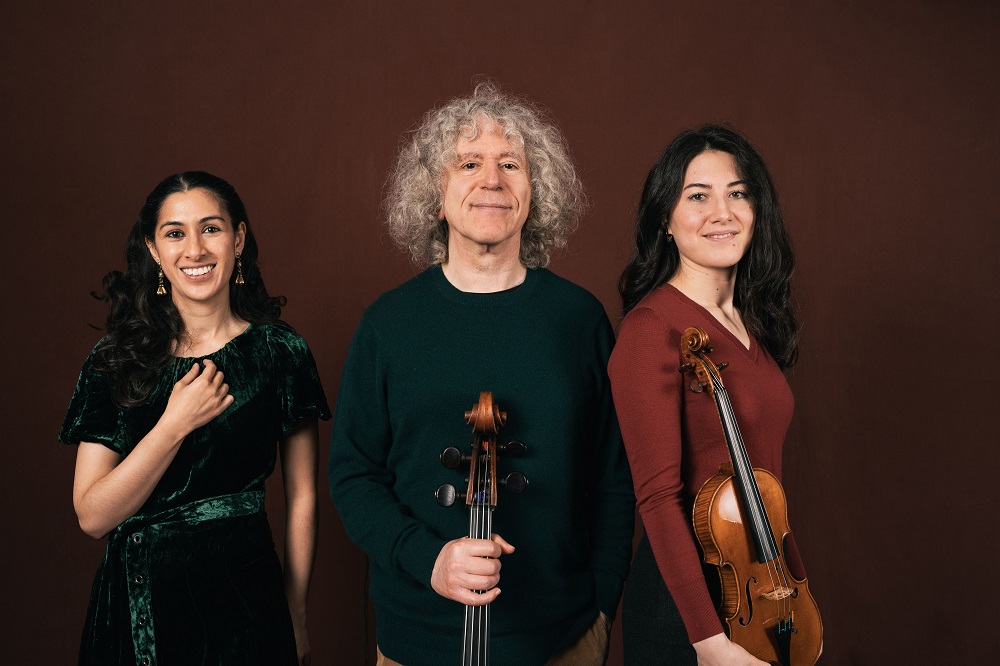 There was a perfect balance between complexity and sheer poetry in Mishka Rushdie Momen's supremely poised Thursday morning piano recital (Rushdie Momen pictured above with Isserlis and Irène Duval). Mendelssohn's Variations Serieuses coruscated at the centre, their unfolding seamless. Programme-wise, I'd have been inclined to start with the three Rameau pieces so lightly ornamented rather than Fauré's miraculous Nocturne No. 13 and Schumann's Gesänge der Frühe No. 1, which despite its title also seems more of a night-piece, fit for 11pm rather than 11am, though very welcome. Rushdie Momen made a magical avian connection between Schumann's "Prophet Bird", her fourth choice among the Waldszenen, and Ravel's "Oiseaux tristes" from Miroirs. Nothing daunted by a mobile phone adding its voice to her phantasmal coda, she went on to give us William Byrd's Lachrymae Pavan after Dowland's "Flow, my tears" – a link to the Adès, an ideal encore for which "perfect" is again the only word.
There was a perfect balance between complexity and sheer poetry in Mishka Rushdie Momen's supremely poised Thursday morning piano recital (Rushdie Momen pictured above with Isserlis and Irène Duval). Mendelssohn's Variations Serieuses coruscated at the centre, their unfolding seamless. Programme-wise, I'd have been inclined to start with the three Rameau pieces so lightly ornamented rather than Fauré's miraculous Nocturne No. 13 and Schumann's Gesänge der Frühe No. 1, which despite its title also seems more of a night-piece, fit for 11pm rather than 11am, though very welcome. Rushdie Momen made a magical avian connection between Schumann's "Prophet Bird", her fourth choice among the Waldszenen, and Ravel's "Oiseaux tristes" from Miroirs. Nothing daunted by a mobile phone adding its voice to her phantasmal coda, she went on to give us William Byrd's Lachrymae Pavan after Dowland's "Flow, my tears" – a link to the Adès, an ideal encore for which "perfect" is again the only word.
It was quite a day for the seemingly unflappable young pianist. She shone, too, that evening, the perfect partner for Isserlis in Nadia Boulanger's very accessible Three Pieces and Debussy's always elusive late Cello Sonata; for that you simply need a pianist and cellist who hold focus at every moment, and these two absolutely did that. I'd heard another ideal pair, Isserlis and violinist Irène Duval (pictured below), play Ravel's Sonata for violin and cello at the Fidelio Cafe. Despite Isserlis's amusing distinction between "dog" ("love me") and "cat" ("I don't care whether you love me or not") music, placing this in the second category, I adored it then and was in seventh heaven to hear it again. 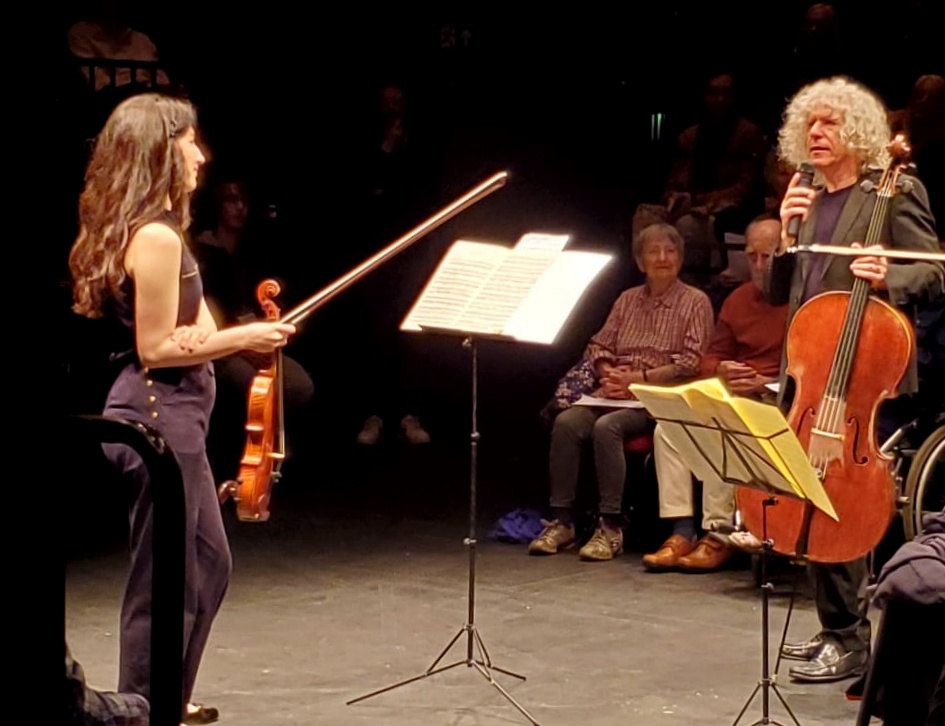
There was one more discovery for me to add to the Saint-Saëns late sonatas and the Schumann in the form we heard it. Duval and Isserlis began the Friday lunchtime recital with Enescu's Second Violin Sonata. I knew the Third as an infinitely inflected, challenging masterpiece, but didn't know that this one deserves equal status in a very different style, with intimations of Fauré bound in to a unique world full of constant surprises (the voices from another planet which end the slow movement, the buoyant yet never superficial tricks of the finale). Like Rushdie Momen, Duval can unleash a focused ferocity and a far-seeing wisdom well beyond her years.
Maybe the short early Fauré Violin Concerto in a version with piano rather than orchestra was bound to feel conventional after that, but Duval and Horton held their heads high throughout. And the real reason for hearing it was the theme the master returned to in his final work, the String Quartet which soars and beats against heaven's gates again and again, the undiminished rapture of the increasingly deaf and terminally ill octogenarian composer realised with unstinting generosity of spirit by Duval, Ajmone Marsan, Roberts and Rosefield. What a way to leave the Crucible and head for the afternoon train back to London, treading air.
Watch L'assassinat du Duc de Guise with Ensemble 360 playing Saint-Saëns's score on YouTube
rating
Share this article
The future of Arts Journalism
You can stop theartsdesk.com closing!
We urgently need financing to survive. Our fundraising drive has thus far raised £49,000 but we need to reach £100,000 or we will be forced to close. Please contribute here: https://gofund.me/c3f6033d
And if you can forward this information to anyone who might assist, we’d be grateful.

Subscribe to theartsdesk.com
Thank you for continuing to read our work on theartsdesk.com. For unlimited access to every article in its entirety, including our archive of more than 15,000 pieces, we're asking for £5 per month or £40 per year. We feel it's a very good deal, and hope you do too.
To take a subscription now simply click here.
And if you're looking for that extra gift for a friend or family member, why not treat them to a theartsdesk.com gift subscription?
more Classical music
 Anja Mittermüller, Richard Fu, Wigmore Hall review - a glorious hall debut
The Austrian mezzo shines - at the age of 22
Anja Mittermüller, Richard Fu, Wigmore Hall review - a glorious hall debut
The Austrian mezzo shines - at the age of 22
 First Person: clarinettist Oliver Pashley on the new horizons of The Hermes Experiment's latest album
Compositions by members of this unusual quartet feature for the first time
First Person: clarinettist Oliver Pashley on the new horizons of The Hermes Experiment's latest album
Compositions by members of this unusual quartet feature for the first time
 Gesualdo Passione, Les Arts Florissants, Amala Dior Company, Barbican review - inspired collaboration excavates the music's humanity
At times it was like watching an anarchic religious procession
Gesualdo Passione, Les Arts Florissants, Amala Dior Company, Barbican review - inspired collaboration excavates the music's humanity
At times it was like watching an anarchic religious procession
 Classical CDs: Camels, concrete and cabaret
An influential American composer's 90th birthday box, plus British piano concertos and a father-and-son duo
Classical CDs: Camels, concrete and cabaret
An influential American composer's 90th birthday box, plus British piano concertos and a father-and-son duo
 Cockerham, Manchester Camerata, Sheen, Martin Harris Centre, Manchester review - re-enacting the dawn of modernism
Two UK premieres added to three miniatures from a seminal event of January 1914
Cockerham, Manchester Camerata, Sheen, Martin Harris Centre, Manchester review - re-enacting the dawn of modernism
Two UK premieres added to three miniatures from a seminal event of January 1914
 Kempf, Brno Philharmonic, Davies, Bridgewater Hall, Manchester review - European tradition meets American jazz
Bouncing Czechs enjoy their Gershwin and Brubeck alongside Janáček and Dvořák
Kempf, Brno Philharmonic, Davies, Bridgewater Hall, Manchester review - European tradition meets American jazz
Bouncing Czechs enjoy their Gershwin and Brubeck alongside Janáček and Dvořák
 Solomon, OAE, Butt, QEH review - daft Biblical whitewashing with great choruses
Even a top soprano and mezzo can’t make this Handel paean wholly convincing
Solomon, OAE, Butt, QEH review - daft Biblical whitewashing with great choruses
Even a top soprano and mezzo can’t make this Handel paean wholly convincing
 Two-Piano Gala, Kings Place review - shining constellations
London Piano Festival curators and illustrious friends entertain and enlighten
Two-Piano Gala, Kings Place review - shining constellations
London Piano Festival curators and illustrious friends entertain and enlighten
 Echo Vocal Ensemble, Latto, Union Chapel review - eclectic choral programme garlanded with dance
Beautiful singing at the heart of an imaginative and stylistically varied concert
Echo Vocal Ensemble, Latto, Union Chapel review - eclectic choral programme garlanded with dance
Beautiful singing at the heart of an imaginative and stylistically varied concert
 Scott, Irish Baroque Orchestra, Whelan, RIAM, Dublin review - towards a Mozart masterpiece
Characteristic joy and enlightenment from this team, but a valveless horn brings problems
Scott, Irish Baroque Orchestra, Whelan, RIAM, Dublin review - towards a Mozart masterpiece
Characteristic joy and enlightenment from this team, but a valveless horn brings problems
 Classical CDs: Voice flutes, flugelhorns and froth
Baroque sonatas, English orchestral music and an emotionally-charged vocal recital
Classical CDs: Voice flutes, flugelhorns and froth
Baroque sonatas, English orchestral music and an emotionally-charged vocal recital

Add comment